Beatrice della Scala and the Scala Theater
Everyone knows the Scala in Milan, but few know that the most famous opera house in Italy owes its name to a Veronese woman: Beatrice della Scala. She lived in 1300, daughter of the Lord of Verona and wife of the Lord of Milan, nicknamed "Regina", Italian for "queen" for her beauty, intelligence and regal character.
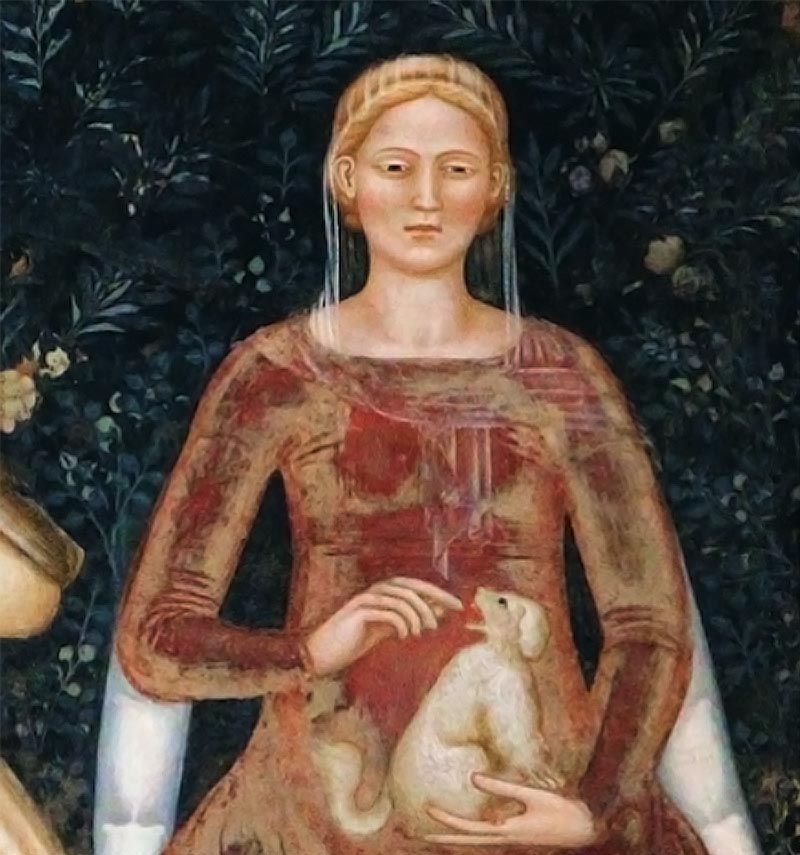
Info and guided tours in Verona:
+39 333 2199 645 info@veronissima.com P.I. 03616420232 C.F. CPPMHL74L13L781C
As for all the great ladies, the date of birth of Beatrice della Scala is not known but it should be around the '30s of the 14th century. Her father was Mastino II della Scala, lord of Verona at a time when the city was at the height of its splendor, capital of a vast and rich territory, able to compete with the most important regional states of northern Italy. Beatrice's brother was Cansignorio, who would become the new lord of Verona upon the death of his father.
Per saperne di più
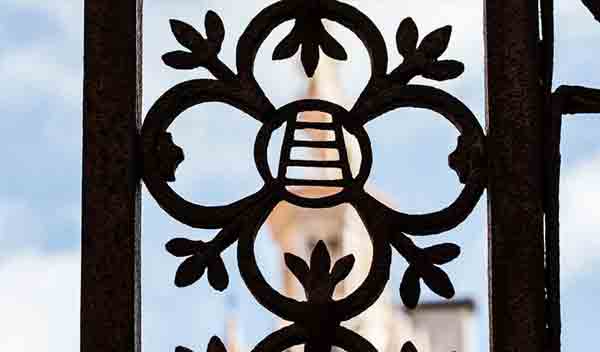
The Scala family lords and their monumental tombs.
Find outFrom Beatrice to "Regina"
Historical sources are sometimes divided on the judgment about her deeds, but they all agree on the great beauty of Beatrice della Scala. Blonde, blue eyes, slender and elegant in her bearing, as can be seen in the fresco that depicts her in the church of Santa Maria Novella in Florence.
Soon she was nicknamed "Regina", Italian for "Queen" not only for her beauty, but also for her character, intelligence and great spirit.
The Wedding
As was the custom at the time, the della Scala family, in addition to numerous wars, sought to consolidate their dominion through marital ties. Mastino II, Beatrice's father, made an agreement with Giovanni Visconti, powerful lord of Milan, to give her in marriage to his nephew Bernabò. The wedding was celebrated with great pomp in Milan in 1350. For the occasion was recited a wedding composition attributed to Petrarch. Beatrice was 15 years old.
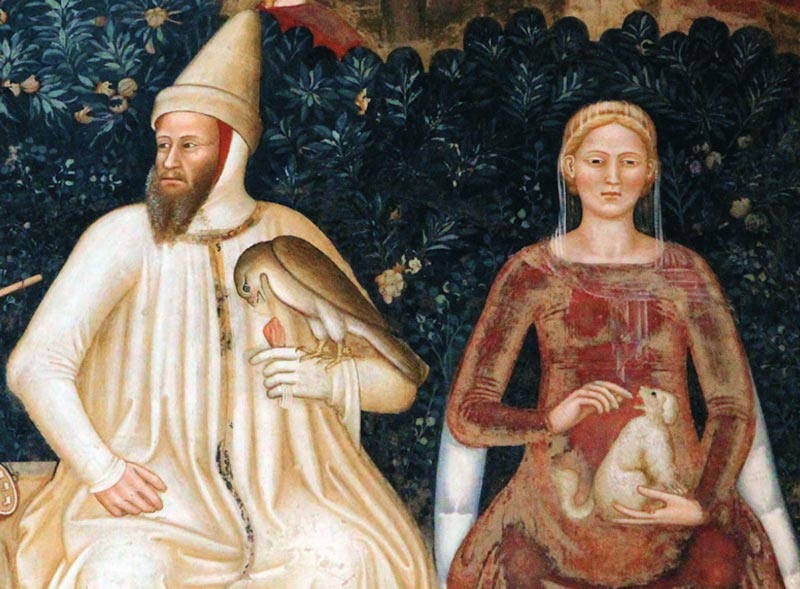
In 1354 Bernabò ascended to the command of the seigniory of Milan. At his side he had a real "Queen" who often joined him in the government of the vast possessions of the Visconti.
Although the bond between Bernabò and Beatrice had been combined following precise political strategies, it turned out to be strong and long-lasting. They had fifteen children.
At Regina's death, in 1384, the consort imposed two years of mourning to all the Milanese citizens.
The Assault on Verona
In 1375, upon the death of Cansignorio della Scala, Beatrice's brother, Bernabò led an army of 1,400 men and marched into the Scala family's territory to claim his wife's share of the inheritance. The assault was repulsed west of Lake Garda and Beatrice later agreed to renounce her claims in exchange for the considerable sum of 400,000 florins, a real fortune.
The Visconti interest in the by then decadent Scaligera seigniory would however continue, culminating in the fifteen years of Visconti domination over Verona starting in 1388.
Santa Maria della Scala
In Milan Beatrice della Scala financed the reconstruction of the church of Santa Veronica near Porta Nuova gate. When the work was completed in 1381, the church was dedicated to the Assumption of the Virgin, but soon people started to cal it by the name of its founder: Santa Maria della Scala.
The church enjoyed alternating fortunes over the centuries, and finally fell into ruin.
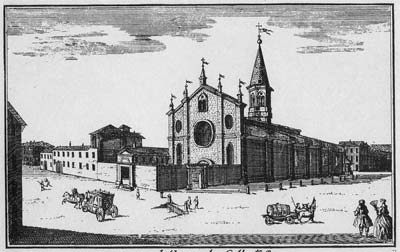
The Scala Theater in Milan
In 1776, under the Austrian domination of Milan, Maria Theresa of Austria decreed the demolition of the old church to make room for a theater. The new building kept, at least in the name, the memory of the old building of worship: Teatro alla Scala.
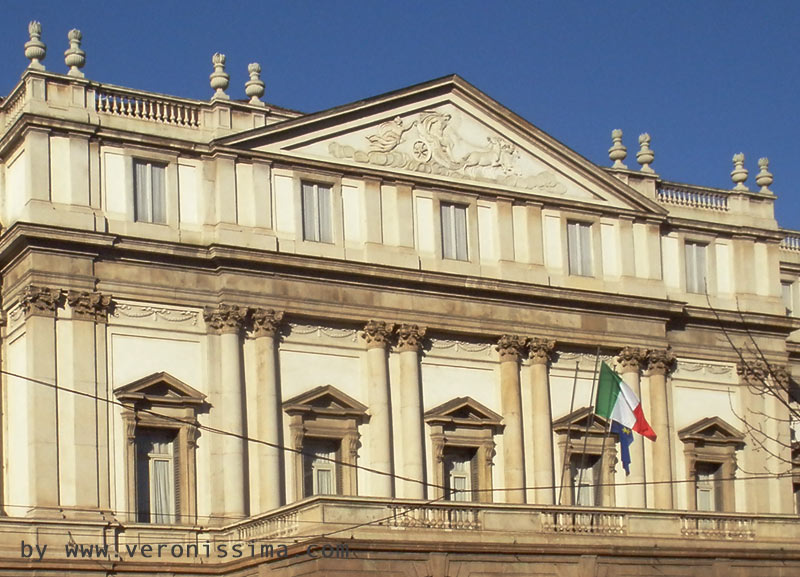
The current Scala Theater was designed by Giuseppe Piermarini to replace the Teatro Ducale destroyed by fire in 1776. It was inaugurated in 1778 with the opera "l'Europa riconosciuta" (Europe recognized) by Antonio Salieri, an author from Verona.
The exterior has a simple and austere neoclassical appearance. The interior, on the other hand, is a typical example of Italian theater, with its horseshoe-shaped hall and rich nineteenth-century ornamentation.
The Lineage: Ancestor of Kings and Emperors
Of the fifteen children born from the union with Bernabò, many went on to marry into important European families. The Scala blood flowed into some of the most significant figures in European history.
Taddea
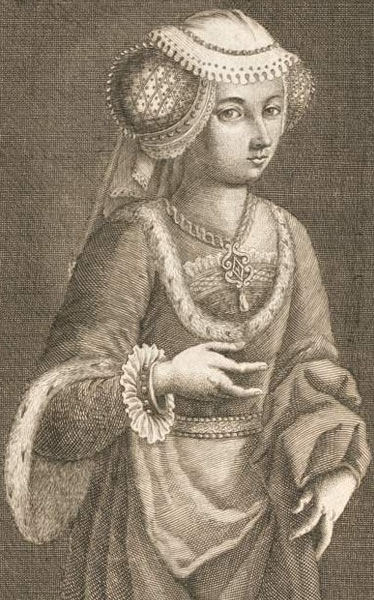
Born in 1351, she was named after her maternal grandmother, Taddea da Carrara, wife of Mastino II. In 1364 she married Stephen III of Bavaria-Ingolstadt. Their daughter, Isabella of Bavaria-Ingolstadt, married Charles VI, King of France, becoming grandmother, great-grandmother and great-great-grandmother of successive three French kings.
One of her granddaughters, Catherine of Valois, went on to marry Henry V, King of England. In the direct lineage of Taddea there are also the famous Henry VIII and Elizabeth I.
Valentina
Born in 1357, in 1378 she married the king of Cyprus: Peter II.
Caterina
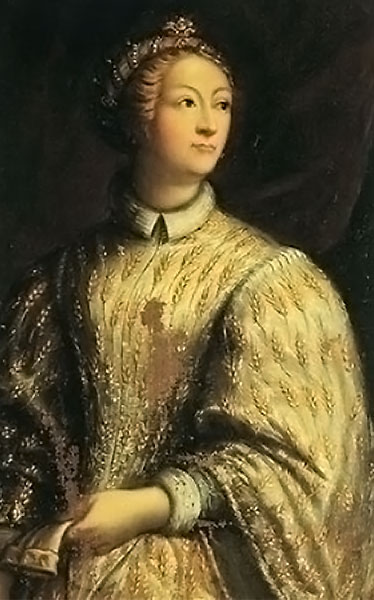
Born in 1362, in 1380 she married her cousin, Gian Galeazzo Visconti. She had the dramatic fate of being at the side of the man who would put an end both to her father Bernabò's power over Milan and to the glorious Scala Seigniory in Verona.
In 1385 Gian Galeazzo, with a subterfuge, ousted Bernabò Visconti, uncle of Gian Galeazzo himself and father of Caterina, thus establishing the Duchy of Milan, a vast dominion that extended over most of northern Italy. Driven by an unbridled ambition, in 1387, Gian Galeazzo put an end to the Scala family Seigniory, taking control of Verona and putting the last descendants of the family, Caterina's cousins, to flight.
From their union were born Giovanni Maria Visconti, who succeeded to his father at the head of the Duchy, and Filippo Maria Visconti, third and last Duke of the Seigniory.
Agnese
Born in 1363, in 1380 she married Francesco I Gonzaga, lord of Mantua. She was accused by her husband of adultery and beheaded in the public square in 1391. The accusation was probably false and served to break the uncomfortable alliance with Bernabò, Agnese's father, ousted by Gian Galeazzo Visconti, who was about to become one of the most powerful lords of Italy.
Verde
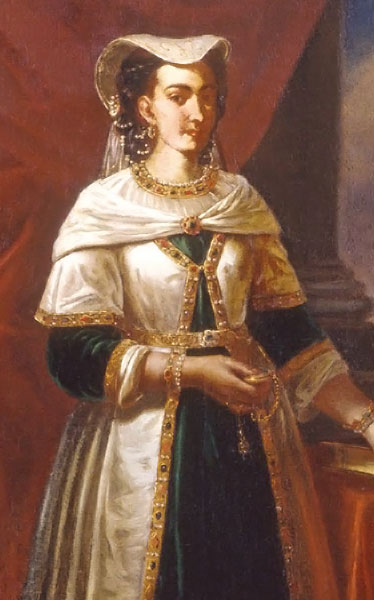
She was born in 1352, and was named after her maternal aunt and great-grandmother, the Verde da Salizzole mother of the great Scaliger lords: Bartolomeo, Alboino and Cangrande.
In 1365 she married Leopold III of Hapsburg in Milan. From their union was born Ernest I of Hapsburg, whose son Frederick, nephew of Verde, was crowned emperor of the Holy Roman Empire in 1452.
In the direct descendants of Verde Visconti, daughter of Regina della Scala, there are twelve emperors of the Holy Roman Empire, four kings of Spain, three emperors of Austria. Among them Charles V, Maria Theresa of Austria, who built the famous theater on the ruins of the church dedicated to the great-great-grandmother Regina della Scala, Franz Joseph, who ruled in Verona and on the ancient Scala family possessions in Italy closing, with a strange game of fate, the circle of the history.
Further information and bookings:
+39 333 2199 645 info@veronissima.com P.I. 03616420232 C.F. CPPMHL74L13L781C

 IT
IT 日本
日本 DE
DE FR
FR 中文
中文 ES
ES